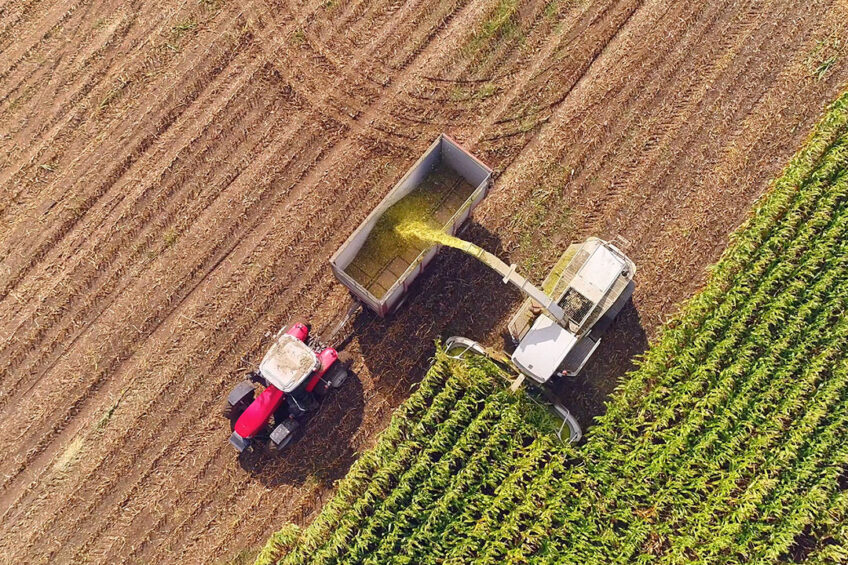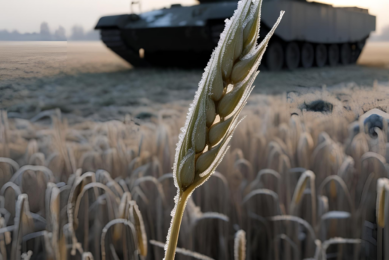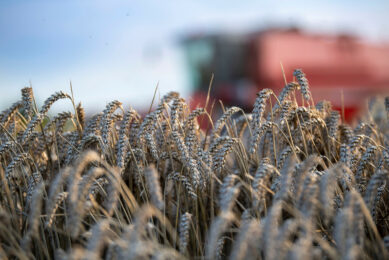Global trends in corn and soybean over the next 8 years explored

Additional animal protein to feed a growing population will mean extra pressure to produce greater corn and soybean yields over the next few years.
It is predicted that by 2031, an additional 71 million tons of animal protein will be needed globally, which will mean the demand for grain and oilseeds will increase.
Over the last decade grain feed has increased by 30%, with corn representing 70% of these grains, while in the same period, oilseed meal feed use has risen by more than 34%, with 70% of this feed being soybean.
With the increase in demand for animal protein, Adolfo Fontes, global business intelligence manager at DSM Animal Nutrition, believes the world will need an additional 45 million tons of soybeans to be able to produce 35 million tons of soymeal and a further 95 million tons of corn.
Growth of corn production for 2022
Fontes said that while overall corn production had increased from 571 million tons to 1,161 million tons between 2001 and 2022, the rate of this increase has slowed with a 34.2% increased witnessed from 2011-2021 compared with a 51.3% increase the previous decade.
Argentina: has the most significant increase in corn production over the past decade – over 150%
United States: still maintains its place as the largest global producer, producing 384 million tons in 2021/2.
China: is now the second largest producer, having seen an increase in production of 2.9% over the last decade. And while China produces nearly a quarter of the world’s corn, it still needs to import, with consumption at a fraction under 27%.
Corn production forecast
Looking ahead, Fontes said global corn production is projected to increase by around 9% in the next decade, with Africa expected to see the greatest percentage increase of 25%.
Speaking at a recent International Egg Commission webinar, he quoted Food and Agriculture Organisation (FAO) statistics showing that yields were improving worldwide, with a global increase of 6.4% expected by 2031, with the bulk of improvements coming in Africa (17.7%), Latin America (8.6%) and Asia (8.7%). However, North America and Asia are expected to continue to lead corn production in 2031 regarding million tons of corn produced.
Soy production in the past decade
Commenting on the last 2 decades of soybean production, he said this had been accelerating in the past 10 years (46.9%) compared to a 30% rise in the first decade of the 21st century. From 2011-2021 Brazil had seen a nearly 90% rise in production, overtaking the USA to become the largest global producer, representing 36% of production with 126 million tons in 2021/22 compared to 121 million tons for the US. Imports of soybean in China are high, with this nation representing only 4.7% of production while consuming 31% of the world’s share. In contrast, the US is producing 34.7% but consuming 18%.
Soy production forecast
Looking ahead, production is expected to rise by 15.7%, a deceleration from the previous 10 years’ 47% increase but the domination established in Latin America is expected to continue. By 2031, it is predicted that Latin America will be responsible for nearly 40 million tons of additional soybeans. Average soybean yield will also rise by 12% across the globe, with Latin America seeing an increase in yield of 17%.
Delegates were told that of the additional 55.9 million tons of soybean projected to be produced over the next 10 years, 21.6m tons would come from Brazil with 9.4% and 8.9% coming from Argentina and the United States.
More than 109 million tons of additional corn will be produced in the same period, with China, Brazil and the US the main contributors (24.2, 21.7 and 16.6 million tons) respectively.
Egg producers were told that 92 million tons of eggs are currently produced, and this is expected to rise by 15% in the run up to 2031, as they continue to be a key solution to meeting the protein demands of the future.
The statistics came with a health warning from Fontes, who said a range of uncertainties would continue to impact agriculture over the next 2-3 years, including:
Geopolitical stability
Crop profitability and the energy crisis
Climate Change
Covid 19
Inflation











